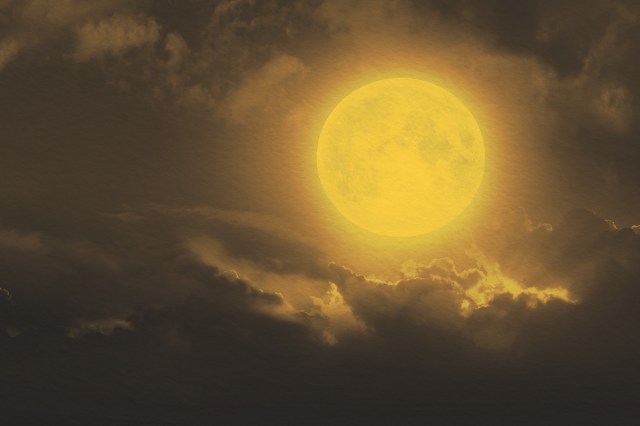
We often say “once in a blue moon” to describe an event that happens infrequently, like a Detroit Lions championship or the McRib returning to the menu at McDonald’s. This usage dates back to the 16th century, when “the moon is blue” was used to describe an event that seemed impossible. In 1821, Pierce Egan used the idiom in his work Real Life in London, to describe how long it had been since two people had seen each other. This denoted a shift in the meaning of the phrase from “impossible” to “unlikely.” But why does a blue moon specifically carry this connotation? Why not a green or gold moon?
In reference to the actual celestial body, people reported seeing a blue-colored moon after the eruption of Krakatoa in 1883. This hue was likely due to the sulfur dioxide and ash in the air changing the wavelengths of visible light, making the moon appear blue.
When it comes to the lunar cycles, there are usually 12 full moons in a year, but occasionally there are 13 — this is known as a “blue moon.” The concept of the 13th full moon was coined in the 1937 Maine Farmers’ Almanac. However, in 1946, amateur astronomer James Hugh Pruett misinterpreted that extant meaning. He wrote an article about “blue moons” as the second full moon in any given month. By this second definition, multiple blue moons can happen in a single year, though this occurs only once every 19 years. When it does happen, it usually takes place during January and March, as February’s unique 28-day (sometimes 29) length makes it more likely. Sometimes there will be no full moon in February at all, as the average duration between full moons is 29.5 days.
The two versions are similar lunar cycle concepts, but either way you track them, blue moons happen roughly once every 2.7 years. So while we may use “once in a blue moon” in an extremely vague sense, it actually refers to that specific period of time.















